A stable fit for a king
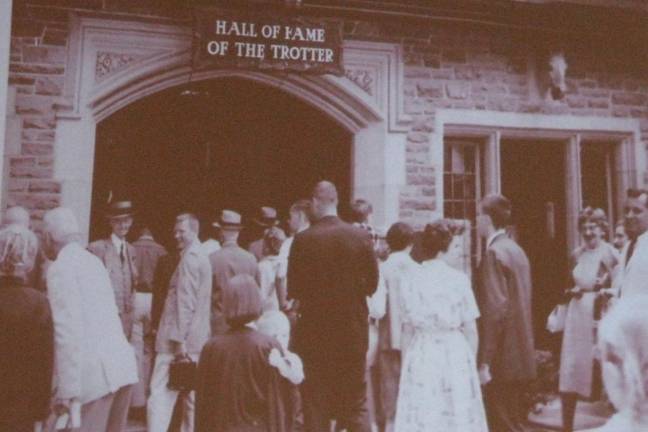
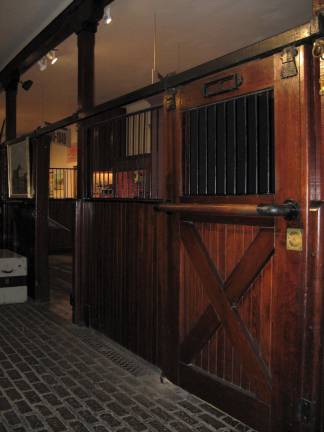
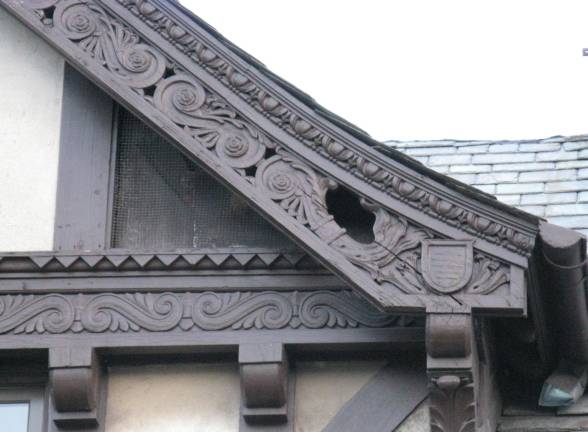
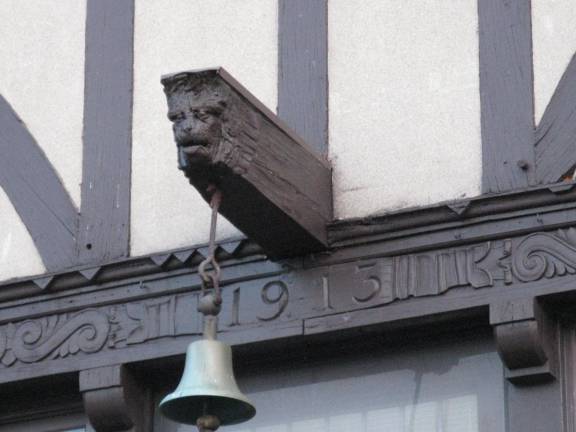
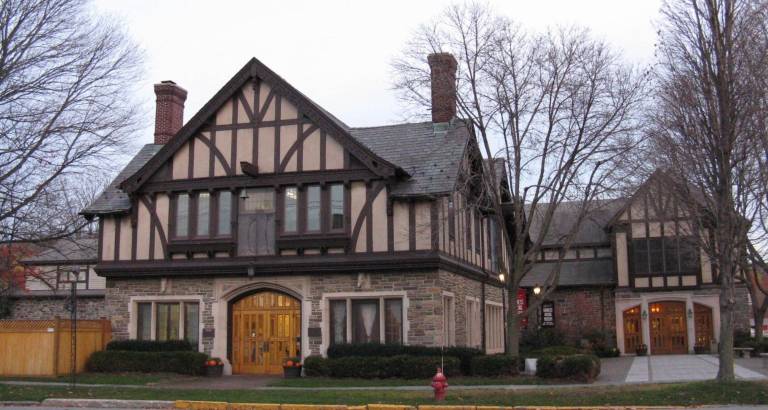
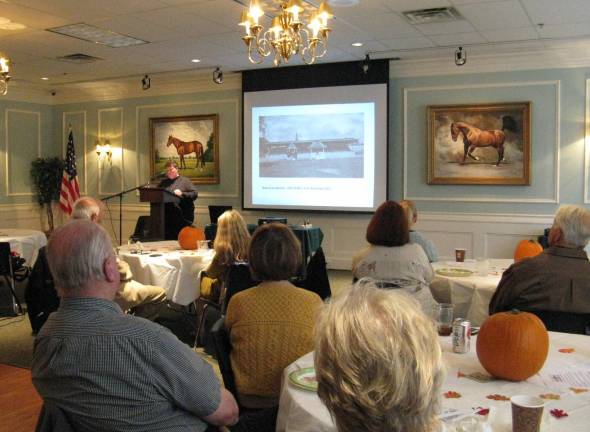
By Ginny Privitar
GOSHEN — The stable was built for horses. But the design, in the “Carpenter Gothic” style, would make any aristocrat — or Goshen industrialist — feel at home.
Rebecca Howard, collections curator at the Harness Racing Museum and Hall of Fame of the Trotter in Goshen, gave a history of the museum building's origins at the latest "Lunch and Learn" lecture on Oct. 29. She said the building combines the simplicity of Tudor design, including half-timbered construction using wooden pegs, with the ornamentation of Gothic design, including heraldic and other carvings along the roofline.
Inside, the woodwork and floors, ornamental ironwork, and diamond-patterned floor drains are all original, except in a few places. The hay drop chutes in the ceiling above the center aisle are also original.
The stable included an upstairs dormitory for the grooms and a well-appointed manager’s office.
Over the years, the building has seen many renovations and expansions. The original roofline, with its two high-peaked gables, was expanded. The preexisting 1913 stable was integrated into the expanded building.
Demonstrating wealthThe history of the stable is intertwined with the fortunes made during the Industrial Revolution and, later, the evolution of the standardbred from Hambletonian's bloodline. William Rysdyk of Chester set Hambletonian out to stud, the Goshen track was founded, and, among wealthy gentlemen, a new sport took hold.
Hambletonian was foaled in 1849, during the California Gold Rush. Horses were raised here to fuel the country's westward expansion. With the development of the standardbred, bred for its stamina and good temperament, the area prospered.
Local lore tells how impromptu horse races along Goshen's Main Street imperiled the general population. The track was established in 1838 to get these gents and their horses off the thoroughfare.
In 1862, Charles Bachman, a huge proponent of Hambletonian’s bloodlines, established Stony Ford Farm for horse breeding about five miles outside Goshen. Among his guests were Ulysses S. Grant and rubber magnate J. Howard Ford. After Bachman’s death, Ford bought Stony Ford and still later built his Goshen stable.
Some industrialists demonstrated their wealth by building palatial estates for themselves and extraordinary stables for their fine horses.
E.H. Harriman in 1894 bought an interest in the Historic Track and played a huge part in its future, Howard said.
"Harriman realized the history that had already taken place here and he moved to preserve it," she said. "His friends came with him to Goshen to drive. There were matinee races every Saturday, and these men drove the horses themselves. When the horses got really good, they put them under a trainer and sent them out on the racing circuit.”
Helping magnates relaxE.H. Harriman died in 1909, but his widow, Mary Harriman, along with J. Howard Ford, and others continued their commitment to the Historic Track. In 1911, Mrs. Harriman contributed a new grandstand. Harriman’s friends dedicated a fountain at the intersection of Main and Church Streets to honor him for building roads and otherwise improving the area.
In 1913, Ford contracted with R.W. McCready of Tuxedo and the architectural firm Hiss and Weeks of New York City to build a gorgeous stable in Goshen. Ford died of apoplexy at The Plaza Hotel right before the stable was completed in 1914, and so never got to see his horses there. The Harriman family remained very involved in standardbred racing. In 1919, the family physician met wealthy businessman William Cane, and told him he needed to relax. Harness racing proved the right prescription.
“Cane comes up to Goshen and falls in love with the sport, people and place," said Howard.
He bought Ford’s stable and named it the "Good Time Stable." He made renovations and turned the grooms’ dorms into an apartment for himself and his wife.
Meanwhile, the Harriman brothers, Roland and Averill, become more involved in the sport, which Roland rescues, along with the track, in the 1920s. In 1923, the company that tracked trotting registers and breeding lines went out of business. Without records, the standardbred could not be maintained.
Roland, along with 20 influential breeders, established the American Trotting Club and bought the rights to the breeding books, which he donated to the club. The United States Trotting Association was formed in the 1930s. Harriman, Cane, and George Morton Levy of Roosevelt Raceway feared the history of the sport might be lost. In 1948, they invested in a formal history written by John Herby and sought to establish a museum. Goshen, the “Cradle of the Trotter,” was a natural choice.
In 1950 they came to an agreement with Cane, then living mostly in Florida, to purchase the stable. It opened as a museum in June 1951 and continues to preserve the history of harness racing to this day.
“It was preserved then and it behooves us to preserve this unique stable," Howard said. "It is more and more important that we who are invested in history and continue to preserve what was given to us and that we continue to try to invest that interest and (pass) that knowledge to the next generation. I can’t imagine this town without the track here. I can’t imagine this sport without the museum.”